With the implementation of BUDI Madani RON95 (BUDI95), all Malaysians with a valid driver’s licence can soon enjoy a lower RM1.99 per litre price for subsidised RON95 petrol on 30th September 2025.
If you do not want to take out your physical MyKad at the pump, the digital alternative is to use TNG eWallet as well as other petrol apps such as Setel and CaltexGo. These apps are BUDI95 ready as long as you’ve completed the verification via eKYC process.
Interestingly, there are dozens comments saying that using smartphones at petrol stations is dangerous and it poses a safety risk. Some claimed that smartphones are banned at petrol stations and it shouldn’t be used at all at the forecourt.
It is 2025, and petrol fuelling apps such as Setel have been around since 2018. Here’s what you need to know about smartphone usage at petrol stations.
Are smartphones banned at petrol stations in Malaysia?
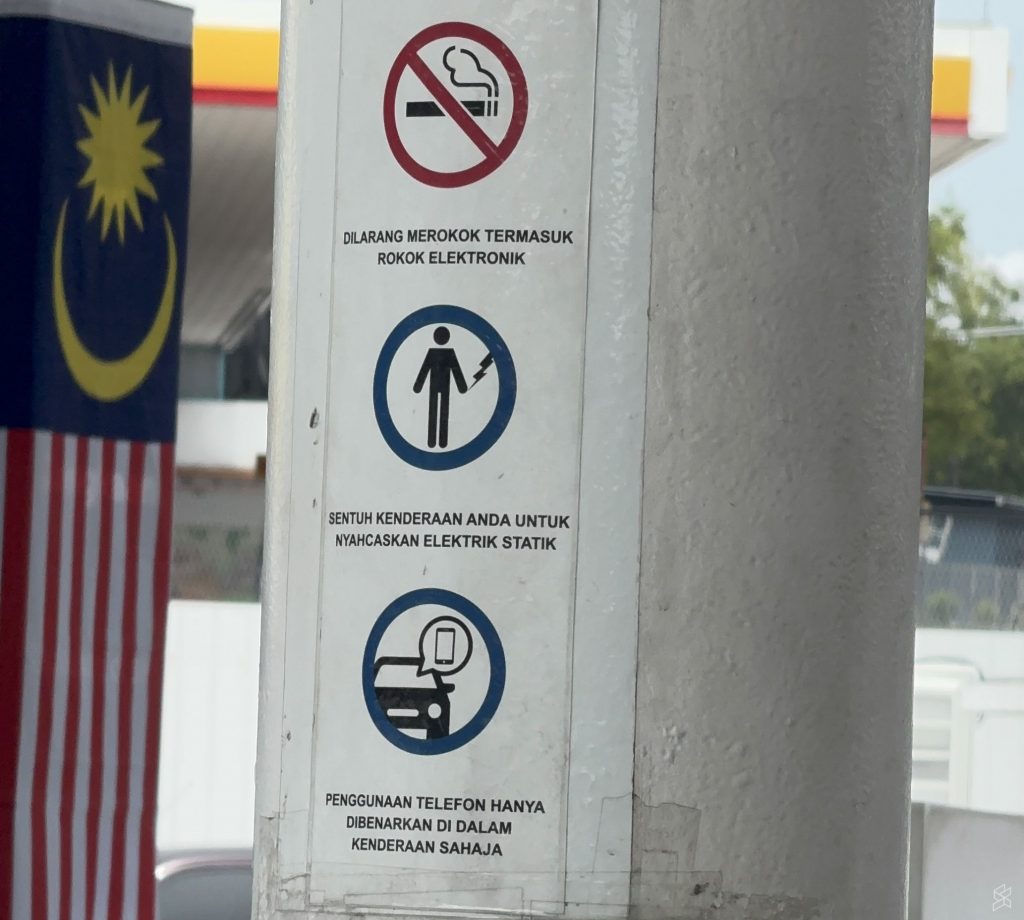
Are smartphones banned at petrol stations? The answer is no, but there are guidelines to ensure safety at the petrol station.
Oil and gas companies operate under high safety standards and regulatory compliance. Companies such as Petronas, Shell and Caltex would not have introduced a fuelling app for users if it poses a safety risk at the refuelling station.
Here are the guidelines from the three petrol brands in Malaysia:
Petronas Policy on Mobile Phone Use
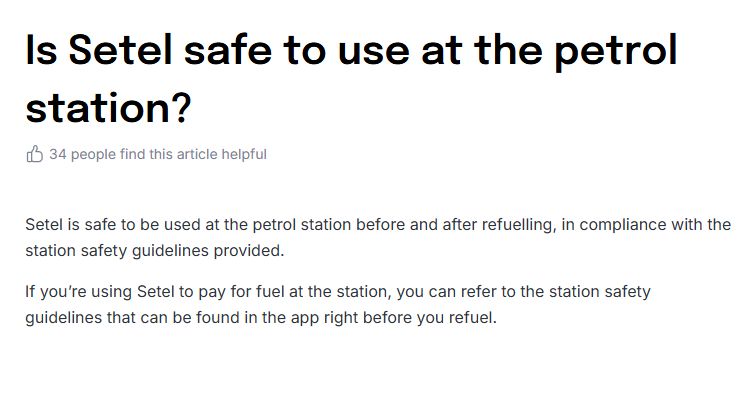
For Petronas, you can use your smartphone at the petrol station while you’re in the vehicle, before and after refuelling, in compliance with the station’s safety guidelines.
If you’re driving a car, you can use the Setel app to activate the pump while you’re inside the vehicle. Once the pump is ready, just put your phone away and exit the vehicle to fuel up.
Take note that you should not use your smartphone during the refuelling process.
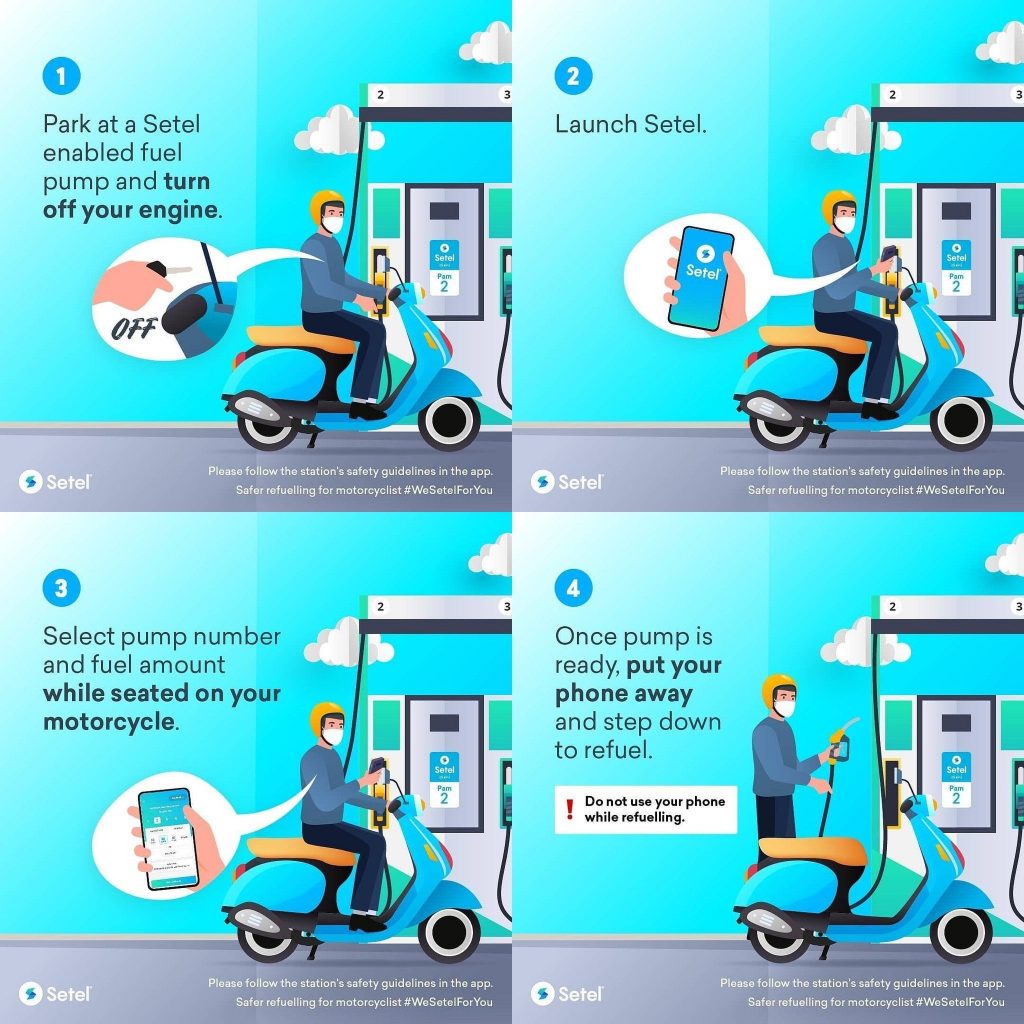
For motorcycle users, you are able to use the Setel app as well. According to Setel’s guidelines, you must first off the engine and use the Setel app to activate the pump while seated on your motorcycle.
Once the pump is ready, put away your phone and step down to refuel. You should not use your phone while refuelling.
Shell Policy on Mobile Phone Use
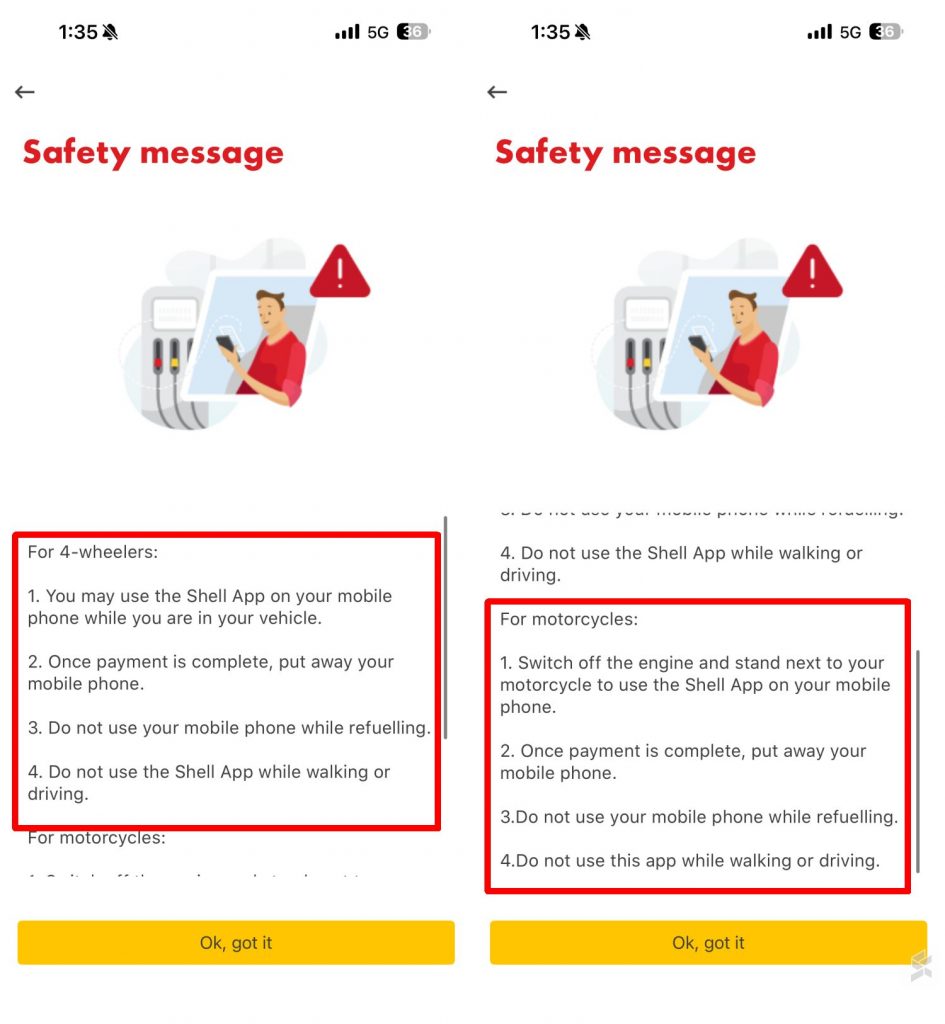
For Shell, users who drive a 4-wheeler can use the Shell App on their mobile phones while inside the vehicle. Once payment is completed, you should put your phone away. Do not use your phone while refuelling.
For motorcycle users, Shell’s guideline is to switch off the engine and stand next to your motorcycle to use the Shell App on your mobile phone. Once payment is done, put your phone away. Do not use your phone until the refuelling process is completed.
Shell also warns users not to use the app while walking or driving.
Caltex FAQ on Mobile Phone use
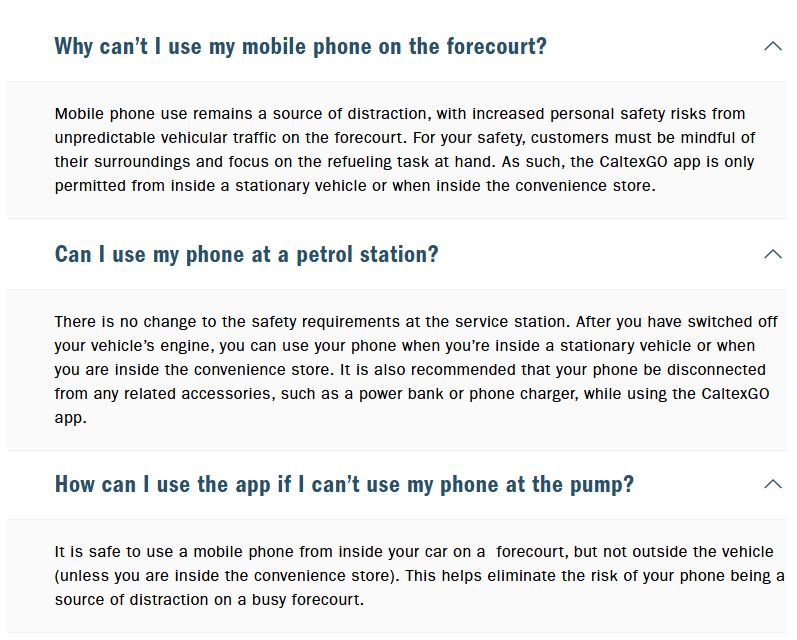
For Caltex, they allow users to use their phone at the station after switching off the vehicle and while inside the stationary vehicle or the convenience store.
It added that it is safe to use a mobile phone from inside your car but not outside the vehicle unless you’re inside the convenience store. Caltex reminds users that mobile phones remain a source of distraction, so the guideline is to ensure users to be mindful of their surroundings and focus on the refuelling task at hand.
What do experts and the industry say about mobile phone risks at petrol stations?
There are many studies that have debunked the claim that mobile phones can cause fire and explosions at the petrol station. The misconception apparently came from an old email chain sometime in the late 1990s which claimed that microwaves emitted from smartphones could generate a spark that could ignite petrol fumes.
In a Straits Times report, UPM electrical engineering professor Dr Chandima Gomes said microwaves from mobile phones are at a very low intensity. To create a spark, it will require a very high-powered microwave and there’s no scientific evidence to prove that mobile phone emission is enough to create a spark.
The report also quoted US-based Petroleum Equipment Institute (PEI) executive vice-president Robert Renkes who said that it was static electricity from a person’s body that causes sparks when it comes into contact with petrol pumps, which leads to fires.
Based on hundreds of fire cases, he revealed that the purported “mobile phone” accidents usually occurred when a person was fuelling up and had returned to the interior of the car to make a call.
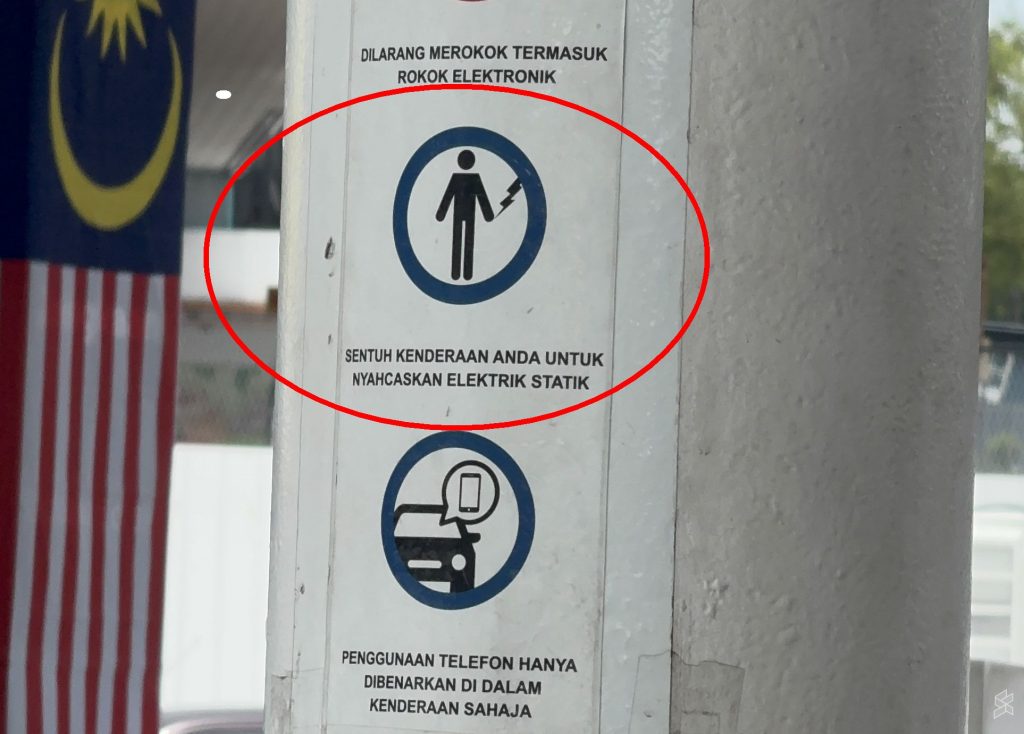
The rubbing against the seat creates static electricity, charging the body. The danger is when they come out of the vehicle without discharging themselves and then they touch the pump nozzle.
That’s why it is important to discharge yourself by touching metal surface with your bare hand, such as the door or the metal body of your car.
According to GSMA, there were 243 reported incidents of fires at petrol stations worldwide between 1993 and 2004. While the fires were initially claimed to be caused by “exploding mobile phones”, experts have revealed that not one of these incidents was associated with telecommunications equipment. Instead, many of these fires were ignited by the discharge of static electricity from the human body.
The UK Institute of Petroleum had hosted a technical seminar titled “Can mobile phone communications ignite petroleum vapour?” in March 2003.
The seminar summary reported: “The seminar showed the findings of research undertaken to date demonstrating that although the majority of mobile phones are not specifically designed and constructed to prevent them igniting a flammable atmosphere (in accordance with standards for ‘protected equipment’), the risk they present as a source of ignition is negligible.
The Institute of Petroleum is not aware of any fire incident that has been substantiated as having been caused by a mobile phone anywhere in the world. Presenters indicated that all of the reported incidents are either hoaxes or have been incorrectly attributed to having been caused by a mobile phone.”
If you’re unconvinced, the Mythbusters have busted the myth that mobile phones can blow up a petrol station. You can watch the video above.
BUDI95: Are eWallets and mobile apps allowed at petrol stations? Are smartphones a safety risk?
News Reports PH
0 Comments